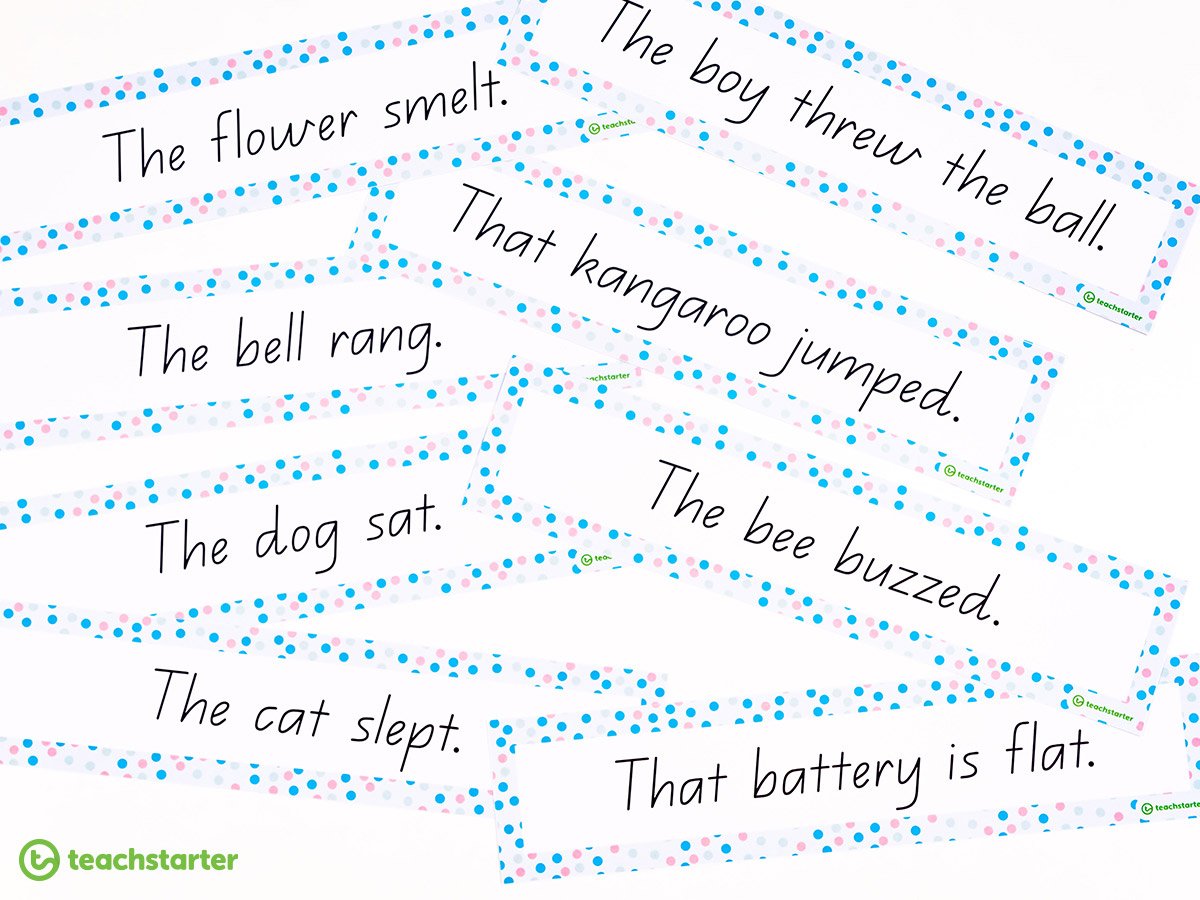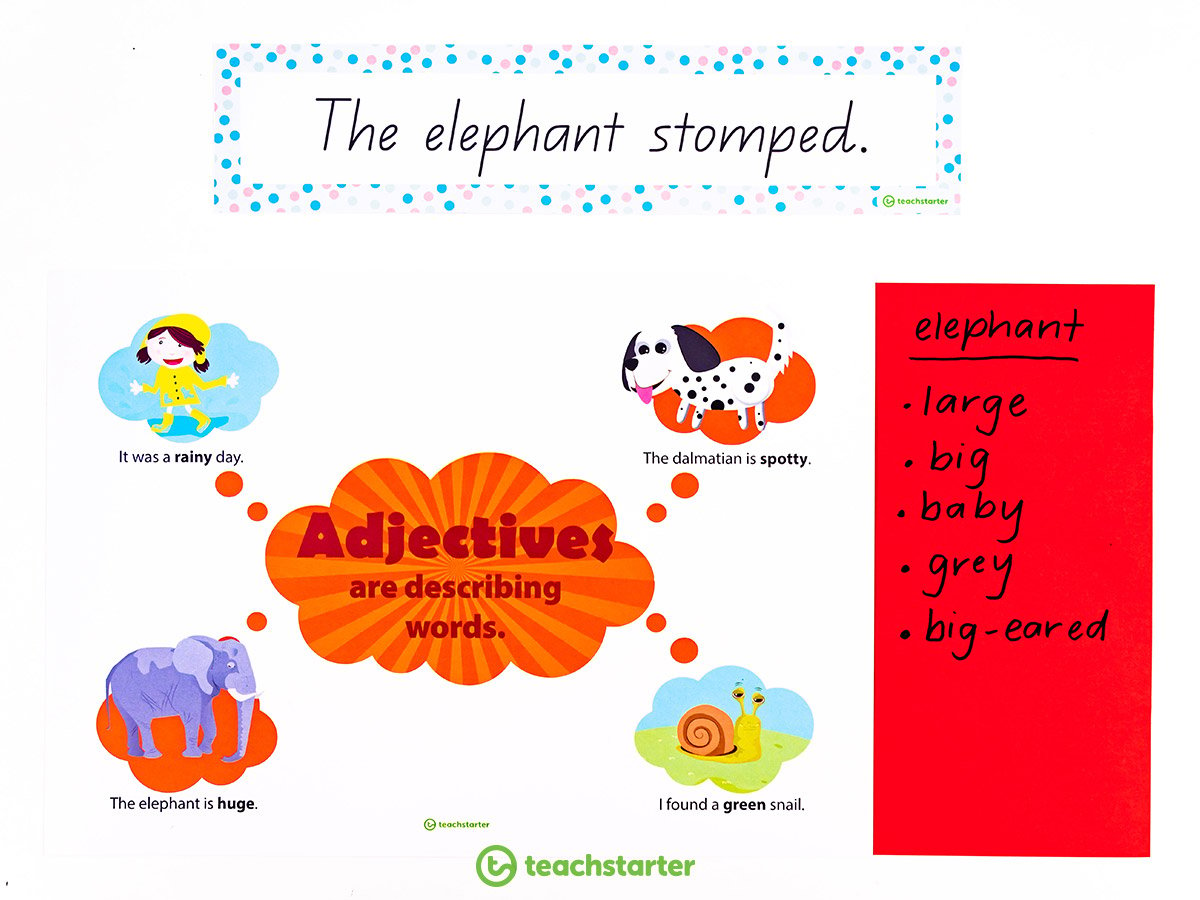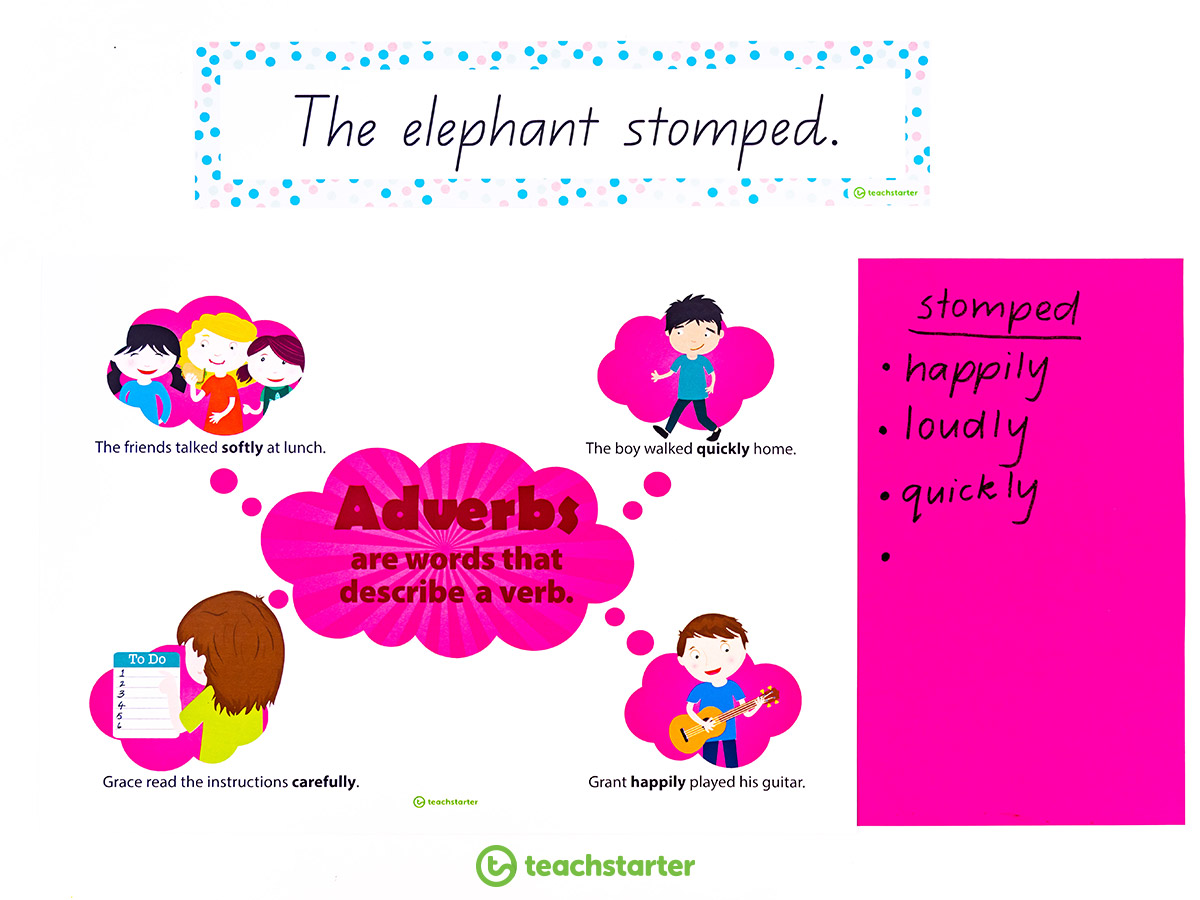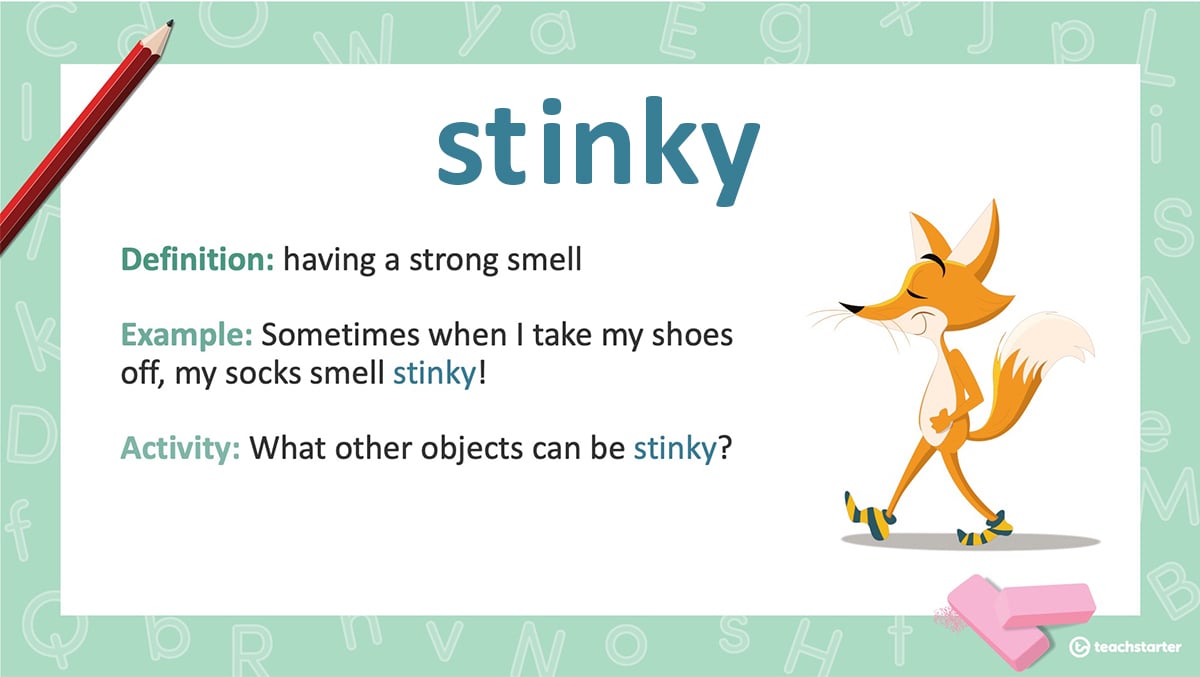How often have you started marking some of your students’ writing and been left pondering ways to encourage them to use more descriptive language? It’s something that takes time and practise and it is important to create as many opportunities for your students to explore and discover ways to expand their sentences!
In this blog, I’m going to feature a teaching resource that is available to download and can be used in a variety of ways. I will also be sharing some of my hints and tips for helping students improve their descriptive sentence writing.
Boring Sentences and Wow Sentences
As a teacher, I would often use the terminology boring sentences and wow sentences when discussing how to improve writing. As a class, we would talk about the importance of using additional descriptive words in our sentences and how this can affect the reader’s experience.
A simple activity I would do with the students would be to ask them to close their eyes and listen as I said, ‘I just ate an apple.’ I would often get a few little giggles or strange looks. I’d then ask my students some probing questions:
- Can they imagine me eating the apple and what it might taste like?
- Do they know what colour the apple is?
- Do they know if it was a crunchy apple or a yukky bruised apple?
I would then ask them to close their eyes again, and listen as I said ‘I just ate a juicy, crunchy, delicious red apple.’
Instantly, no matter how young the students were, they understood the importance of those additional descriptive words in a sentence.

Review Parts of Speech
These bright and cheerful parts of speech educational posters are the perfect addition to your classroom when focusing on improving your students writing. Parts of speech are a critical grammar concept for your students to understand to help improve their writing.
The main parts of speech that students must have an understanding of when utilising the ideas in this blog are nouns, adjectives, verbs, and adverbs.
Along with these posters, here are a few other resources that may spark some inspiration:
[resource:3020658][resource:2723574][resource:2723582][resource:2701918]
Introduce ‘Boring’ Sentence Examples
It is important to note that when discussing boring sentences – I would never use a student’s writing as an example. Any writing in my eyes is worth applause, especially in the early years, so I was always conscious of this fact and would always just create some boring sentence examples to use.
That’s the beauty of this download, it includes 60 flash cards that have examples of boring sentences.
The title of this resource is ‘Dressing Up a Sentence’, discuss with your students why this resource is called this.
What does ‘dressing up’ mean, brainstorm and write down what the students say. You may have to steer them in the right direction, that dressing up is when you make the effort to look nice and presentable, adding accessories to an outfit, etc.
That’s what your students are going to do with these boring sentences – you are going to dress them up so that they are wow sentences!
Whole Class Activity Idea
Pick one of the boring sentences from the Dressing Up A Sentence Resource and discuss with your students that as a class you are going to brainstorm a variety of different adjectives, adverbs and more information to make this sentence exciting. Here’s an example:
The elephant stomped.
As a class talk about what is the noun? (elephant) What did the elephant do? What is the verb? (stomped). As a class, students brainstorm adjectives that could describe the elephant.
Once you have a number of adjectives for the elephant, the next brainstorming is for some adverbs that describe verb in the sentence – stomped.
Next, students can then brainstorm some more information to add to the sentence which is where…
Where could the elephant be stomping?
Using the whole class brainstormed words, encourage your students to have a go at re-writing the sentence using some of the words that the class brainstormed.
Small Group or Individual Work Activities
Another activity you could do is to utilise a similar approach but in a small group situation such as during Literacy Groups in the classroom.
Colour coding the words is a great way to visually show sentence structure and encourage students to have a play around with the sentence. Sometimes writing words on paper seem so final, so giving them the ability to move words around easily is extremely helpful.
When the smaller group brainstorm words – just write these words on different coloured paper and then cut it all up. Ensure the original sentence is on a different colour as well.
As a group, students can explore the different ways to set up the sentence.
Individual Activities to Expand Students’ Sentences
We just love when our members share ways they have used our resources in their classroom – it means it has been quality assured by kids themselves!
“The kids totally loved ‘dressing up’ sentences today – such an effective activity from Teach Starter” – @misslearningbee.
As part of the download of this resource – Dressing Up A Sentence Activity, a template is provided to help guide students with the initial brainstorming of ways to expand the sentence.
Check out this clever little bee…
Miss J from @sparkle_n_teach has laminated the boring sentence cards and placed them on a ring.
Students then flip to a sentence and re-write the sentence adding more detail to it as they go using a whiteboard. What is it with whiteboards? Kids love writing on them!
This activity idea is a fantastic progression from using the template as students become more confident adding more detail to their sentences as they go rather than doing the initial brainstorming.
Over time with activities such as the above – students will start to work out ways they can make their own sentences more interesting.
Another habit I got my students into is that when they had finished their own writing – they would highlight a sentence that they thought was a little boring and have a go at re-writing that sentence at the bottom of their page!
Expanding Vocabulary in the Classroom
Equip your students with more knowledge and vocabulary to use when expanding their sentences by introducing a word of the week with your students.
We have a collection of Word of the Week teaching resources that can help you set up this initiative in the classroom.
Check out Ali’s blog Word of the Week | Expanding Vocabulary in the Classroom.
[resource:2731798][resource:2731810][resource:2731806][resource:2731814]















Comments